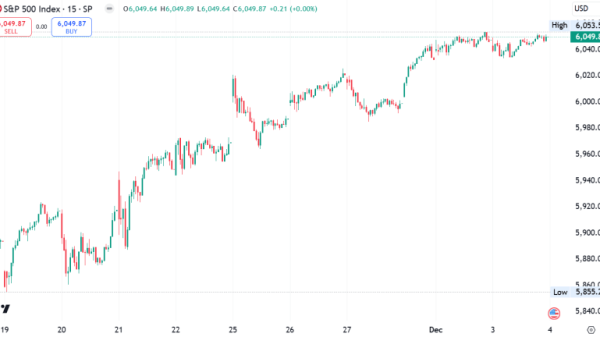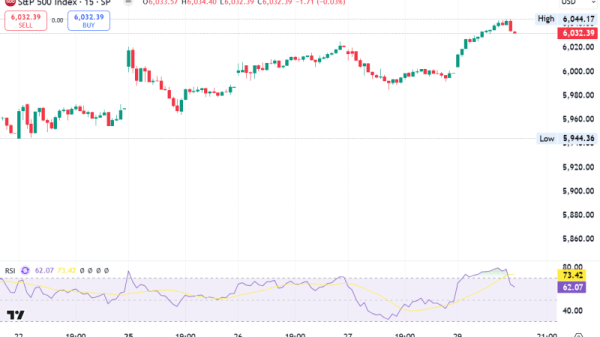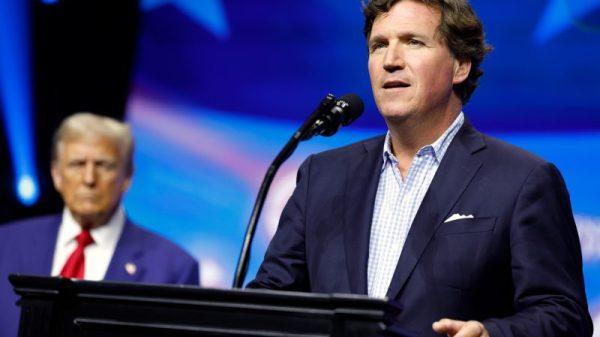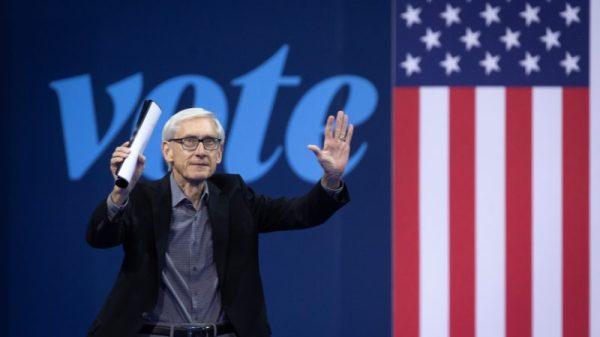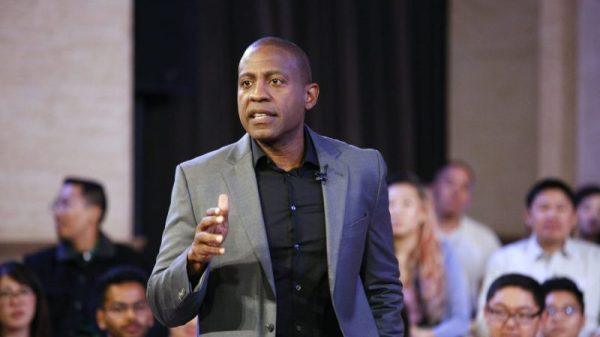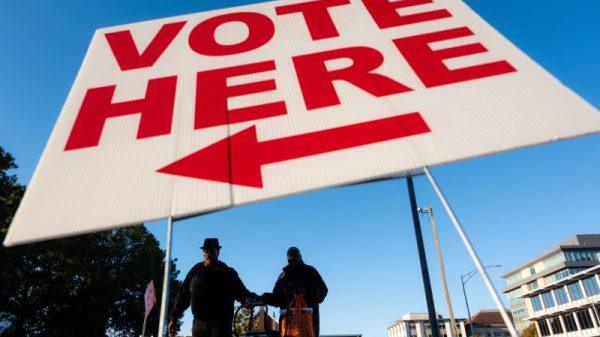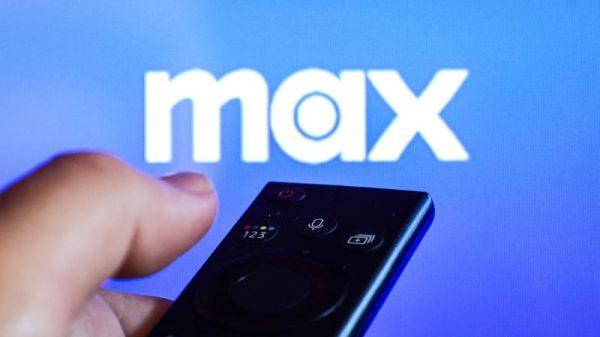Bank7 Corp (NASDAQ: NASDAQ:BSVN) reported record earnings and EPS for both the third quarter and year-to-date, according to President and CEO Tom Travis during the company’s recent earnings call. The bank’s strong performance was attributed to robust capital levels and a disciplined approach to managing a matched balance sheet.
Key Takeaways
• Record earnings and EPS for Q3 and year-to-date
• Significant increase in cash dividend
• Projected moderate to high single-digit loan growth for the year
• Maintained strong credit quality and net interest margins
Company Outlook
• Cautiously optimistic about the bank’s position
• Targeting a share price of $40
• Expecting $9.5 million in noninterest income for Q4, with $2.3 million from oil and gas
• Anticipating slight increase in noninterest expenses for Q4
Bullish Highlights
• Strong capital levels and disciplined balance sheet management
• Two liquidity backstops: Federal Home Loan Bank and new Federal Reserve facility
• 20%+ net interest income growth
• Payout ratio of around 20%, well below industry average of over 35%
Bearish Highlights
• Challenges posed by recent storms on the Eastern seaboard
• Slight increase in nonperforming assets
• Potential impact of upcoming national election
Q&A Highlights
• Open to M&A opportunities, considering acquisitions up to $500 million
• Focus on cultural alignment and strong core banking fundamentals in potential M&A partners
• Confident in managing margins despite potential Federal Reserve rate changes
• Lowest historical net interest margin recorded at 4.38%
Bank7 Corp’s management expressed confidence in navigating economic fluctuations, supported by strong credit quality and a commitment to maximizing net interest margins amid a competitive landscape. The bank’s leadership highlighted their ability to maintain core margins despite potential Federal Reserve interest rate cuts, referencing historical performance data.
Chief Credit Officer Jason Estes projected moderate to high single-digit loan growth for the year, emphasizing a careful approach to risk management, particularly in the hospitality and energy sectors. Despite recent rate cuts, the bank has not seen a significant decline in deposit activity and plans to manage deposit rates carefully moving forward.
The company announced a significant increase in its cash dividend, maintaining a payout ratio of around 20%, well below the industry average of over 35%, indicating room for further increases. Bank7 Corp remains open to merger and acquisition opportunities, with a focus on cultural alignment and strong core banking fundamentals in potential partners.
Overall, Bank7 Corp conveyed a positive outlook for growth and strategic opportunities, while maintaining a cautious approach to risk management and credit quality.
InvestingPro Insights
Bank7 Corp’s (NASDAQ: BSVN) recent financial performance aligns with several key metrics and insights from InvestingPro. The company’s record earnings and EPS, as reported by CEO Tom Travis, are reflected in InvestingPro’s data, which shows a strong return on assets of 1.89% for the last twelve months as of Q2 2024. This performance has contributed to the stock’s impressive 71.98% price total return over the past year.
The bank’s robust capital levels and disciplined approach to balance sheet management have not gone unnoticed by investors. InvestingPro data reveals that BSVN’s price-to-book ratio stands at 1.96, indicating that the market values the company at nearly twice its book value. This premium valuation suggests investor confidence in the bank’s asset quality and growth prospects.
Bank7’s commitment to shareholder returns is evident in its dividend policy. An InvestingPro Tip highlights that the company “has raised its dividend for 3 consecutive years.” This is further supported by the impressive 50% dividend growth over the last twelve months, as reported by InvestingPro. The current dividend yield of 2.56% adds to the stock’s attractiveness for income-focused investors.
The management’s cautiously optimistic outlook and target share price of $40 are interesting when compared to the InvestingPro Fair Value of $31.26 and the analyst fair value target of $40. This suggests that while the stock may have room for growth, it’s also trading close to what some consider fair value.
It’s worth noting that despite the strong overall performance, an InvestingPro Tip points out that BSVN “suffers from weak gross profit margins.” This could be an area for investors to monitor, especially given the bank’s focus on maintaining strong net interest margins.
For investors seeking a more comprehensive analysis, InvestingPro offers 7 additional tips for BSVN, providing a deeper understanding of the company’s financial health and market position.
Full transcript – Bank7 Corp (BSVN) Q3 2024:
Operator: Good morning and welcome to Bank7 Corp’s Third Quarter Earnings Call. Before we get started, I’d like to highlight the legal information and disclaimer on Page 26 of the investor presentation. For those who do not have access to the presentation, management is going to discuss certain topics that contain forward-looking information which is based on management’s beliefs as well as assumptions made by and information currently available to management. Although management believes that the expectations reflected in such forward-looking statements are reasonable, they can give no assurance that such expectations will prove to be correct. Such statements are subject to certain risks, uncertainties and assumptions, including, among other things, the direct and indirect effect of economic conditions on interest rates, credit quality, loan demand, liquidity and monetary and supervisory policies of banking regulators. Should one or more of these risks materialize or should underlying assumptions prove incorrect, actual results may vary materially from those expected. Also please note that this conference call contains references to non-GAAP financial measures. You can find reconciliations of these non-GAAP financial measures to GAAP financial measures in an 8-K that was filed this morning by the company. Representing the company on today’s call, we have Tom Travis, President and CEO; J.T. Phillips, Chief Operating Officer; Jason Estes, Chief Credit Officer; and Kelly Harris, Chief Financial Officer. With that, I’ll turn the call over to Tom Travis. Please go ahead.
Thomas Travis: Thank you. Thank you. We also have Paul Tillman with us who is Kelly’s right-hand person and shout out to Kelly and Paul for their great work, but also getting the information out very timely. So I’m not surprised. We have a great group. So good morning. Welcome to everyone. Before we launch into our results, we’re certainly aware of the devastation inflicted by the recent storms on our fellow citizens and our thoughts and prayers certainly go out to them. Very trying times over in the Eastern seaboard for sure. As we move into our strong financial results, we’re excited. We’re cautiously optimistic even in the face of this upcoming and very divisive national election. It will be nice if we can tone down the rhetoric for sure. Clearly, we’re in for some choppy waters over the next few months. And yet we’re continually stressing how comforted we are to be in this part of the United States. It’s a real geographic financial advantage for sure. With that in mind, those issues are still always on our mind, and this is certainly a time for caution. And that’s why we take such comfort in our fundamental strengths, especially the high levels of capital. And it isn’t just the higher levels of capital that gives us that comfort. We have a very strong liquidity position and we further enhanced that last quarter by adding a second liquidity backstop and that being the new Fed facility, which is now in place, should we ever need it in times of stress. So we now have two meaningful sources of additional liquidity, the FHLB, which we’ve had for a long time and the new Fed facility. Our disciplined approach to maintaining that properly balanced matched balance sheet has really been proven through the rate cycles. And those of you that have followed us over a long period of time and I know that we include in the debt, the spread management that compares our spread through up and down rate cycles in the various treasury markets. It’s a great strength of the company. And really, it’s the foundation, along with our credit quality that produces these results. And as you can see, record earnings and a record EPS not only for the recent quarter, but our year-to-date results. And so we’re very proud of those accomplishments. And those were achieved through normal operations. And in the case of our EPS, they weren’t driven by share buybacks. So our strong earnings and capital levels were the driving factors that motivated us recently to make a large increase to our cash dividend. But even with that large increase, our dividend payout ratio is still in the 20% range. And when you compare that to banks that do pay dividends, the average is a little bit more than 35%. So Bank7 has plenty of room for further increases if we want to do that, while at the same time being comforted by our top-tier earnings that rapidly accumulates capital. And as majority shareholders, we’re really pleased with the total shareholder returns produced by our company. And as you can see in the published materials, we rapidly compound shareholder value much faster than almost any other institution. Our results are certainly attributed to our outstanding team members who work with our loyal customers. We’re all very aligned and we’re really looking forward to our future and I can’t thank the team members enough. So with that said, we’re certainly ready for any questions and ready for Q&A this morning. Thank you.
Operator: We will now begin the question-and-answer session. [Operator Instructions] And our first question today comes from Woody Lay with KBW. Please go ahead.
Wood Lay: Hey, good morning, guys.
Thomas Travis: Good morning, Woody.
Kelly Harris: Good morning.
Wood Lay: Wanted to start on the loan growth side. I mean the growth was great to see in the third quarter. I know there was some commentary last quarter that there was some funding delayed. But I was just curious how the pipeline is looking entering the fourth quarter?
Jason Estes: Yes. So thanks for the question. Last quarter, we were very confident that we had a lot of fundings coming. This quarter, I would say, I would expect us to finish more in line with where we are now. I wouldn’t expect another nice growth quarter. But I think here we are kind of ending up in that range we’ve talked about for the full year of kind of a moderate to high single-digit loan growth for the year. And I think we’re going to be right in line with that. I think in general, there are certain segments we restrict to just continue to mitigate the risk in our portfolio. And so we continue to see opportunities there and we’re passing on more deals specifically in the hospitality space, the energy space. Those two components, we continue to really sift through opportunities to make sure we’re optimizing the portfolio return with those dollars that we restrict by our own intent. So all-in-all, should fall right in line with what we thought at the beginning of the year.
Wood Lay: Yes. And as you talk with clients, have you noticed the difference in activity now that we have a couple of rate cuts behind us or is it still about the same?
Jason Estes: About the same.
Wood Lay: Got it.
Thomas Travis: And, Woody, this is Tom. I would add to Jason’s comments that, again, this goes back I believe to two factors. One is the geographic advantage of the robust nature of this part of the country and two, it confounds me on a regular basis how the financial mentality has been about higher interest rates in the United States. And I think that’s just been somewhat of a false narrative. And what I specifically mean is I don’t know the exact number. I know that Jason and Kelly and I looked at this four or five months ago. And I think we went back for the last 60 years. And I think there’s only nine times where the 10-year treasury was higher than where it’s been. And so I think this narrative evolved when the Fed started raising rates, that, oh my gosh, we’re in these high interest rates and then that bled into borrowers aren’t going to be able to make payments or economic activity. And when you really look at long-term averages, it really hasn’t been an interest rate story. It’s been a cost story that may have had dampening effect on companies’ borrowing money and building projects and investing in capital goods. And so I’m not trying to be long-winded here. But I think it’s important for all of us to remember that we’re operating in a very normal interest rate environment. And when you marry that with where we are in the part of the country and the inward migration, it’s just a very nice steady ambient level of economic activity.
Jason Estes: And that’s why the growth continued.
Thomas Travis: That’s right.
Jason Estes: Throughout the last, call it, 15 months, 18 months.
Thomas Travis: That’s right. And again, I said another way, I mean, we bounced into historical modern low modern history of the United States, historical interest rate lows. And so when you bounce off of that, people think, oh my gosh, the rates are high, but that’s just not the case. Go look at the research, go look at the historical numbers on the treasury markets. And so anyway, enough of that, but we feel really good about. As Jason said, we could have put even more loans on the books, but we’re trying to be very careful.
Wood Lay: Yes. No, that’s really helpful color. I guess shifting over to more of the deposit side, I really appreciate the color you provided on the loan betas and the deposit betas and how those shifted with the recent rate cuts. And I was a little surprised to see the deposit betas sort of go and lockstep with the loan beta. Did you see any deposit runoff when you made those rate adjustments? And with future cuts, do you think you can continue to cut deposit rates as aggressively?
Thomas Travis: I think this is Tom again, Woody. We’re not surprised. Your comment about you were, I forget your words, but you noted how we had gone lockstep. And I think it goes back on opening comments relative to a properly matched balance sheet. And we work so hard and we don’t take our eye off the ball relative to loan floors and floaters and keeping our fixed rates, I think, it’s 24% of the loan portfolio or something like that. And even those are rapidly amortizing. And so the end result is a very properly methodically applied concept here. I would tell you that we have modeled, I mean, Kelly, what did we do? We did four columns. We did 25, 50, 75 and 100 basis points. And I guess I would use the term non-issue for the first 100 basis points, Kelly?
Kelly Harris: Correct. And then once you get through the first 100 to 150, that’s when you start to see the floors really start to kick in.
Thomas Travis: Right. And so historically, it becomes more difficult as you get into that 100 basis point territory because you do have customers that will want to come in and say, hey, I think my floors are maybe too high. I don’t want to renegotiate. And but again, we’ve lived through these cycles and we’ve been very successful. And so, yes, it might get a little more difficult. But the end of the day, Woody, we are very comfortable operating our NIM and our historical ranges and that’s really the final message.
Wood Lay: Yeah. Well, that’s all for me. Congrats on the great quarter.
Thomas Travis: And Woody I have a question. This is Tom. I noticed your target was $40. It seems to me like you’re sandbagging because we’re almost already there.
Wood Lay: Well, it was a great quarter. So we’ll see where it goes from there.
Thomas Travis: We appreciate your coverage, Woody. Thank you.
Wood Lay: Yes, of course. Thanks, guys.
Operator: [Operator Instructions] And our next question comes from Nathan Race with Piper Sandler. Please go ahead.
Nathan Race: Hey, guys. Good morning. Thanks for taking the questions.
Thomas Travis: Hey, Nate.
Kelly Harris: Good morning.
Nathan Race: Just going back to the margin commentary previously. I appreciate you still expect the margin to remain kind of within that historical range. But just given you guys posted 20% plus NII growth and short-term rates are going up the last couple of years. Just curious how you’re thinking about NII growth prospects in the next year, just given that short-term rates are expected to decline from here?
Jason Estes: Yes. So, Nate, I think that one of the things that’s not really been spoken about on this call yet is the fact that banks, in general, in 2023 after what happened in March, really tightened up on lending money. And so our net interest income and our NIM that’s been helped because we’ve been able to be more stubborn on giving in and negotiations on loan rates, okay? And that’s allowed us to give in a little more on deposit rates. And so there’s different, I would say, variables involved as we’re negotiating loans and deposits and trying to attract new clients and take care of our existing clients. But in general, I hear you, yes, there’s been pressure, but we’ve been able to navigate that because they’re really, in our market, you still have good, healthy economic growth and you have, I would say, fewer banks really pursuing loans. There’s always competition, but I think the level of competition for loans, it shifted a little bit last year really in the second half of the year. And, yes, I’m sure that’s going to normalize, and it wouldn’t surprise me as we continue to try to grow both loans and deposits going into next year. Some of that restriction or governance that we’ve seen on some of these competing banks, if they start to return to more normal competing levels. And so I think we’ve talked about this now for several quarters in a row that we could see our NIM gradually sliding down, but we’re fighting every day to maximize it.
Nathan Race: Got it. That’s very helpful. And well we have you Jason, just would be curious to hear an update on the credit quality front. It seemed like nonperformers are relatively stable in the quarter. So just curious to hear what you’re seeing in terms of criticized prospect trends these days?
Jason Estes: Yes. So we were up $1 million roughly in the quarter, but there’s a lot that’s actually gone on there that doesn’t really show up in that individual number. We had a couple of really nice results. The largest NPA, we had left, we actually got $1.6 million in principal reduction during the quarter. And we had the final tail of the energy credit paid off. That was $1.1 million. And so we collected just under $3 million on last quarter’s numbers from the NPA in principle, which is a good result. We did have two new relationships show up on this list that are on nonaccrual. I think those two, we don’t expect meaningful loss there. One is approximately $3 million, the other one is $750,000 in total balance. But I do think those will stay on here through year-end. But my goal is always work this number to zero. And so we’ve had good results throughout this entire year. Credit-wise, the portfolio is performing well overall, but still always, the book is big enough now where there’s enough clients, there’s enough exposure to various areas and industries. And so we’re always eyeing something, but we’re working through those successfully.
Nathan Race: Okay. Great. And then just in terms of thinking about the future provisioning levels, growth kind of reverts to the mid-single-digit range going forward. Any thoughts on just the provision and kind of where you’d like the reserve to kind of trend over time going forward relative to, I think, 1.25 coming out of 3Q?
Jason Estes: Yes. This quarter, depending on what happens with the economy in the fourth quarter. I still expect us to operate in these same ranges. As long as the portfolio holds up and the economic activity stays similar, knock on wood, it’s been really good in Texas and Oklahoma. And so we’re hopeful that it continues kind of in the same ranges.
Thomas Travis: Yes, and I think to add to Jason’s comments, Nate, this is Tom. As we’ve commented before, it’s the Rubik’s cube, so to speak. And what I specifically mean is we carry a significant amount of cushion over and above the PCA levels of capital. And Kelly I don’t remember. Do we put that slide in the deck? I know we have the stress test. I don’t think we do, but I have it in my lap. But if you look at the cushion, the dollar cushion of where we are relative to excess capital, if you want to call it that way, you really are in a splitting hairs environment, whether it’s 125, 120 or 130. And so we really look at those factors in tandem. And as an example, it’s not in the deck, but I’ve got it here. Just on the CET1 ratio, we have $98 million of excess capital just over and above the prompt corrective action levels. And it’s kind of consistent with you go through risk-based capital at $60-some-odd million. So we don’t really feel like that we’re going to always, I mean, we’re mindful of CECL. We have a very precise application of our methodology, but we’re not conflicted at all about minor variations. And a lot of that has to do with how great of a job Jason and his staff do on asset quality. So that’s a long answer, but that’s kind of how we feel about it.
Nathan Race: Got it. That’s helpful. And one last one for me. Tom, as you described, you guys are creating capital at pretty strong clips to say the least. So just curious how you’re thinking about the M&A environment today and just kind of the acquisition prospects going forward?
Thomas Travis: Nate, you know us well, and there are, I’m pretty certain, a few people on this call that I’ve interfaced with relative to the M&A space this year and continue to do so. We were pretty far down the road on a particular potential transaction earlier this year that ended up not doing. We have, I would tell you that the market is very robust and we are constantly over the last four, five months being approached not to — not as a potential person to sell, but as a bank that’s known for public currency and a high-performing bank. And so what’s now starting to increasingly occur are quite a few opportunities and some of which are unfortunately what I call the zombie banks, who are really stuck with AOCI issues or not just in their securities portfolio, but also in the loan rate — interest rate mark world. And I don’t want to be as bold or forward to say that some of these banks may have been using hope as a strategy relative to interest rates falling and therefore unwinding some of that AOCI and interest rate marks. But I think the reality has hit in many places. And I mean, if you just look at it, the 10-year still around 4% today, right. And so I don’t remember where the 10-year dipped, but I think there are based on the volume of opportunities that are being presented to our institution because of our performance and our currency, but also the fact that some of these banks have, I think, come to realize that it’s a slower boat to China relative to unwinding some of these marks that I would expect that more, I think, more opportunities that were more discussion type exploratory conversations will convert into actual transactions. And we certainly see that. We’re constantly engaged. We have some specific targets and discussions. And so we’ve always been consistent that we want to build capital to be opportunistic. And I would expect transactions to occur given all those dynamics sooner rather than later in our space.
Nathan Race: Got it. That’s great color. I appreciate the commentary. Thanks, guys. Congrats and a great quarter.
Operator: And our next question comes from Matt Olney with Stephens. Please go ahead.
Matt Olney: Hey, good morning. Tom, on those last comments on the M&A front, just remind us of the characteristics of an M&A partner that you’re looking for as it relates to size and geography and just the type of bank you’re looking to partner with?
Thomas Travis: Matt, we’ve been consistent in our history, and I’d like to call it, you’ve heard this many times, the right side of the balance sheet. And so we are — we have opportunities now and we’re evaluating a handful that are really nice core banking groups with core funding and really good cultures. And so I guess I would flip the coin over and say that we’re not — what we are not interested in are specific verticals and Fintechs and our earnings. We are interested in people that are culturally aligned, that would bring a really nice balance sheet to the bank and blend really well with the Bank7 team. And as far as size goes, we’re excited about, we compound equity so quickly and we have excess equity. We’re — we would love to do an MOE. I think those are fun to do and they’re also very rewarding to the shareholder base and our executive team we’re big bank people, and we’re — without sounding arrogant, we’re properly trained. And hopefully, as you followed us over the last six years and all those quarters, what is that, 24 quarters now since we’ve been public, and we’ve been rock steady with our reporting and no misstatements. And I think that, again, I give so much credit to this team and how precise and professional and top-tier performing they are. And so when you really think about that married with the excess capital of compounding the equity, an MOE or a $2 billion or $1 billion or whatever it is institution is right in our wheelhouse. And so and I think that those are the preferred things. Does that mean we wouldn’t do a $500 million acquisition? No, we would. So if those characteristics are in place that’s how we would see the future.
Matt Olney: Okay. That’s great, Tom. I appreciate that. And I guess on the, sticking with the M&A theme, there’s lots of financial metrics to consider as you review these. In your view and the Board’s view, what’s the — what are the more important financial metrics to review as you kind of go through these various M&A options?
Thomas Travis: I think it’s a very difficult question to answer because, look, some people are more focused on earn back. Some people are more focused on P/E ratios and tangible book value and deposit premiums. And for us really we are guided by long-term fundamental principles. And so all of those metrics have to coalesce, they have to merge and blend. And so with that being said, you’re not going to see Bank7 get outside of any normal or right down the middle of the fairway parameters. There’s no reason for us to do that. And so if you look at us and again, not trying to prop ourselves up, but these are just facts, but we are a top-tier organization, and we’re top 1%. And you look at that in any metric, whether it’s efficiency ratio, ROE, ROA, credit quality, we are just liquidity. And so when you really look at that, we’re trading at — where are we today about 1.8 or 2 times book and then our P/E is 9.5% or 10%. And so when you start thinking about some banks, and they seem to think that — or maybe the investment bankers with all due respect to you guys go in and say, well, we think you guys are worth metrics that are anywhere near what I just described, but yet their performance is not there. It’s a pretty tough thing for us to accept that. And so what we try to do when we approach [Technical Difficulty] we do and so we’ll pay a very fair price and it will make a lot of sense. And then the rising tide, so to speak, will raise both boats going forward. And so that’s not a specific metric-by-metric answer for you, but it’s how we view things. And we view things over the course of a three and a five year strategic period.
Matt Olney: Okay. Great. I appreciate the commentary, Tom. And I guess just stepping away from M&A, going back to the core margin discussion. You talked about kind of maintaining that historical range regardless of what the Fed does in the near term. Any general commentary about the core margin as it relates to the Fed. So if we were to see a very active Fed cutting each meeting 25 or 50 bps versus a more methodical, slower moving Fed cutting maybe every other meeting, any commentary about kind of directionally what that would mean for the core margin? Thanks.
Thomas Travis: I just think historically, I mean, you can go back to the COVID years and go back to the slide that we have and nothing concerns us our ability to manage that. I don’t know what page that slides on. It’s on Page 9. But we’ve gone back to 2016 and shown our spread compared to the five year, the 10 year and cost of funds. And so there’s nothing that would indicate to us. And again, we’ve modeled it, and we’re not concerned at all. So I think the lowest — the non-fee income NIM components what’s the low point, 4.38.
Kelly Harris: 4.38 for a full year.
Thomas Travis: 4.38, right. And I think Jason has said in the past, and I think he’s right, that at some point, as the bank gets larger and larger, you say, well, maybe you touch those lows and maybe it goes to 4.25 or 4.15 if you get it to be a really large bank in a certain economic environment. But if that were to ever happen then fine. We’re still going to be a top-tier bank.
Matt Olney: Okay. Thanks, guys.
Thomas Travis: Thank you.
Operator: Our next question comes from Nathan Race with Piper Sandler with a follow-up. Please go ahead.
Nathan Race: Yes. Thanks for taking the follow-up. Maybe a question for Kelly just in terms of thinking about the impact within fees and expenses from the oil and gas assets going forward.
Kelly Harris: Yes, Nate, for Q4, we do feel like that we saw a peak revenue expenses from an oil and gas perspective in Q3. And then that said, noninterest income combined bank buy $3 million and $2.3 million that’s going to come from the oil and gas and $700,000 coming from core fee and then from a noninterest expense perspective for Q4. We’re modeling $9.5 million with $1 million coming from the oil and gas and $8.5 million coming from core. So core noninterest expense up a little bit quarter-over-quarter. Historically, our fourth quarters have been a little bit higher in that perspective.
Nathan Race: Got it. That’s helpful. And then one last one. I know there’s some noise in [Technical Difficulty]
Kelly Harris: Nate, are you still there?
Nathan Race: Did you hear my question?
Thomas Travis: No. We didn’t.
Kelly Harris: The phone cut out.
Nathan Race: I apologize. Just the last question around noninterest-bearing deposit levels. I know there’s some noise over the last couple of quarters tied to some legal matters. So just curious how you’re thinking about that trajectory going forward?
Kelly Harris: Pretty flat. Just our normal growth. We did have that large $100 million deposit that flowed out here earlier this year. And then I’d say pretty flat. Nothing major either way.
Nathan Race: Okay. So it seems like some of the mix shift changes have largely slowed across the client base lately, if not entirely?
Kelly Harris: Yes.
Nathan Race: Okay, great. I appreciate you guys taking the follow-ups. Thanks again.
Kelly Harris: Thank you.
Operator: That concludes our question-and-answer session. I would like to turn the conference back over to Tom Travis for any closing remarks.
Thomas Travis: Well, thank you all for your interest. We appreciate the coverage and we look forward to the future. Thank you. Bye-bye.
Operator: The conference has now concluded. Thank you for attending today’s presentation. You may now disconnect.
This article was generated with the support of AI and reviewed by an editor. For more information see our T&C.

